How to Fix Windows Update Error 8007000E
While trying to download and install Windows Updates for your computer via Windows Update – Windows’ resident update utility, there are quite a few different things that can go wrong. One of the many problems users have reported running into when using Windows Update to get the latest updates for their Windows computer is error code 0x8007000E. Error code 0x8007000E is just one of the many different error codes Windows Update can throw at you if it fails to retrieve, download or install updates for your Windows computer. Error code 0x8007000E is always accompanied by an error message which usually states that Windows could not search for new updates, Windows Update failed to install some updates for your computer, or Windows Update encountered an unknown error.

Error code 0x8007000E has been known to affect every currently supported iteration of the Windows Operating System. The cause of error code 0x8007000E varies from one affected computer to the other – it can be anything from a third-party antivirus or anti-malware program interfering with Windows Update or accumulated junk files to corrupt system files or corrupt files/folders in the SoftwareDistribution folder. Since there are so many possible causes of error code 0x8007000E, there are also quite a few possible solutions to the problem. The following are some of the most effective solutions that you can use to try and get rid of error code 0x8007000E:
Solution 1: Disable or uninstall any and all third-party security programs
Third-party antivirus, anti-malware and firewall applications can sometimes clash with Windows Update and lead to problems such as error code 0x8007000E. If a third-party security program is the cause of your sorrows, simply disable (or better yet, uninstall) any and all third-party security programs installed on your computer. Once that’s done, check to see whether or not the fix worked.
Solution 2: Remove junk files from your computer
- Press the Windows Logo key + X to open the WinX Menu.
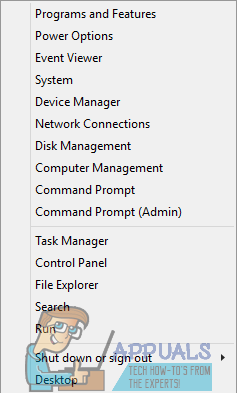
- Click on Command Prompt (Admin) to launch an elevated Command Prompt with administrative privileges.
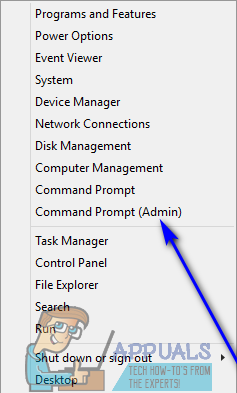
- Type cleanmgr into the elevated Command Prompt and press Enter.
- Allow the utility to do its thing.
- When presented with a list of all the junk files you can delete from your computer, check all the boxes, especially the box beside Temporary files.
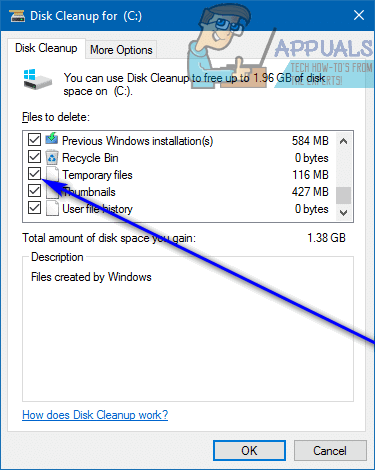
- Click on OK, confirm the action if asked to do so, and wait for the selected files to be deleted.
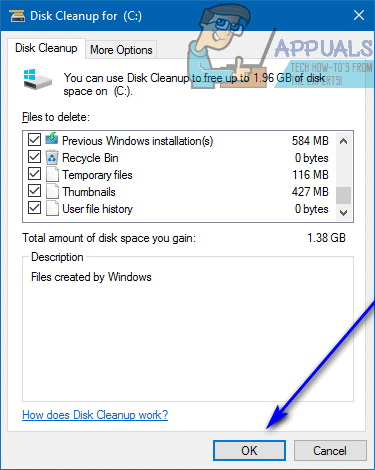
- Once done, launch Windows Update and check to see whether or not the issue has been resolved.
Solution 3: Run an SFC scan
SFC (System File Checker) is a utility designed to analyze the Windows Operating System for corrupt or otherwise damaged system files and either repair them or replace them with cached copies. If you are seeing error code 0x8007000E because of corrupted or otherwise damaged system files, running an SFC scan is as good a possible solution as any.
Solution 4: Ensure the Windows Update service is running and set to Automatic
- Press the Windows Logo key + R to open a Run dialog.

- Type services.msc into the Run dialog and press Enter to launch the Services manager.

- Scroll down the list of services, locate the Windows Update service and double-click on it to access its properties.

- Open the dropdown menu directly in front of Startup type and click on Automatic to select it.
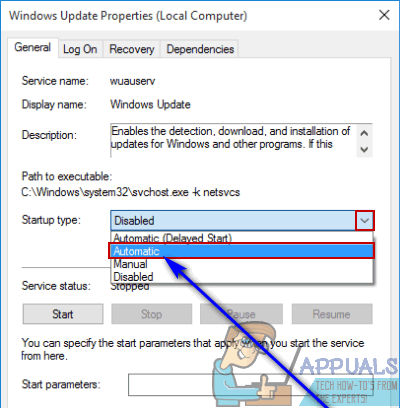
- If the Windows Update service is stopped, click on Start to start it. If the service is already running, ignore this step.
- Click on Apply.
- Click on OK.
- Launch Windows Update and see whether or not it still throws error code 0x8007000E at you.
Note: Make sure to follow the same conditions for the following services “Background Intelligent Transfer services, Cryptographic, Windows Installer,”.
Solution 5: Rename the SoftwareDistribution folder to SoftwareDistribution.old
- Press the Windows Logo key + X to open the WinX Menu.

- Click on Command Prompt (Admin) to launch an elevated Command Prompt with administrative privileges.

- Type the following command into the elevated Command Prompt and press Enter:
ren %systemroot%\SoftwareDistribution softwaredistribution.old
- Renaming the SoftwareDistribution folder to old will cause your computer to completely disregard that folder and its contents and create a new SoftwareDistribution folder, negating the effects of any corrupted or damaged files/folders that may have been residing in your computer’s SoftwareDistribution folder. Once the command has been executed, close the elevated Command Prompt.
- Restart your computer and check to see whether or not the problem still persists once it boots up.
Solution 6: Rename Spupdsvc.exe to Spupdsvc.old
- Press the Windows Logo key + R to open a Run dialog.

- Type the following into the Run dialog and press Enter:
cmd /c ren %systemroot%\System32\Spupdsvc.exe Spupdsvc.old
- Once the command has been successfully executed, launch Windows Update and check to see whether the utility successfully searches for, downloads and installs updates or still spits out error code 0x8007000E.
Solution 7: Running Windows Update Troubleshooter
In some cases, the Windows Update Troubleshooter can fix this particular glitch with Windows Update and fix any issues with it by scanning and clearing any errors with configuration.
- Press “Windows” + “I” to open settings.
- Click on the “Update & Security” option and select “Troubleshoot” from the left column.
- Select the “Windows Update” option and click on the “Run the Troubleshooter” button.
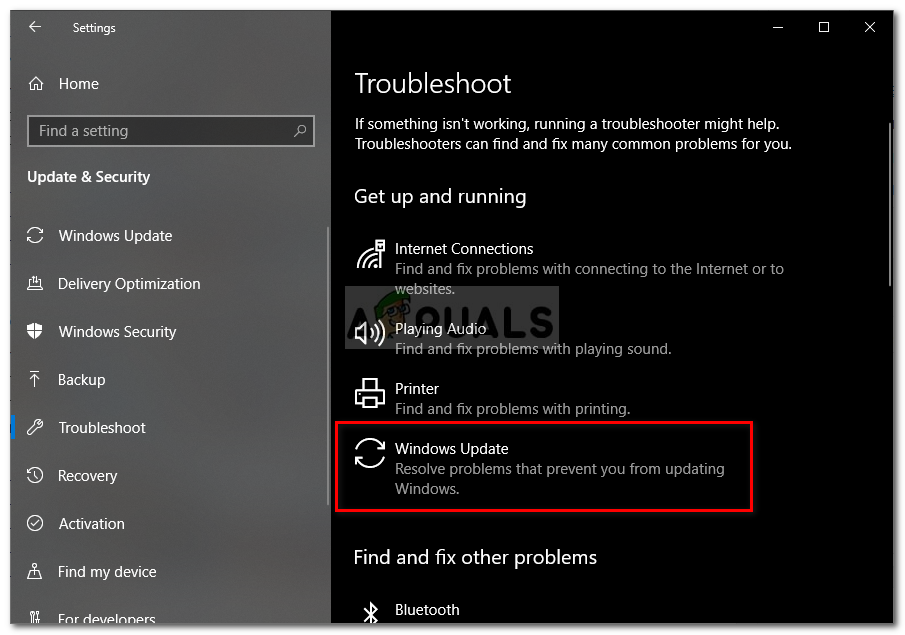
Running Windows Update Troubleshooter - Wait for the troubleshooter to run and then follow the on-screen prompts to initialize the process.
- After the process ends, check to see if the Windows Update runs now.
Solution 8: Running Commands
In some cases, certain components of the Windows Update might have cached some corrupt data or they might not be running properly. Therefore, in this step, we will be running some commands from the command prompt to get them back to working again.
- Press “Windows” + “R” to open the run prompt.
- Type in “cmd” and press “Shift” + “Ctrl” + “Enter” to provide administrative privileges.

Running the Command Prompt - Type in the following commands one by one and press “Enter” after each one.
net stop wuauserv net stop cryptSvc net stop bits net stop msiserver ren C:\Windows\SoftwareDistribution SoftwareDistribution.old ren C:\Windows\System32\catroot2 catroot2.old net start wuauserv net start cryptSvc net start bits net start msiserver pause Exit
- Check to see if Windows Update works now.
Solution 9: In-Place Upgrade (Workaround)
In some cases, the only workaround might be to actually perform an in-place upgrade that won’t delete any of your files but it will update your computer to the latest version of Windows around. In order to do so, follow the steps below.
- Use this link to download the Windows Media Creation Tool.
- Accept the prompts and check the “Upgrade this PC Now” option.
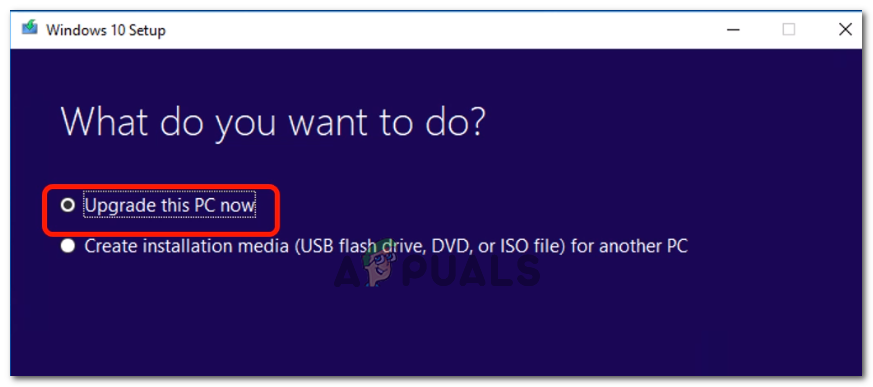
Checking the “Upgrade this PC Now” option - Check the “Keep Personal Files” option in the next prompt and select the “Install” option.
- Wait for the setup to complete and check to see if the issue persists.
Solution 10: Settings Internet Explorer as the Default Browser
In some cases, the error might be triggered if the Internet Explorer isn’t set as the default browser on the computer. Therefore, in this step, we will be setting it as default. For that:
- Press “Windows” + “I” to open settings.
- Click on the “Apps” button and select “Default Apps” from the left pane.
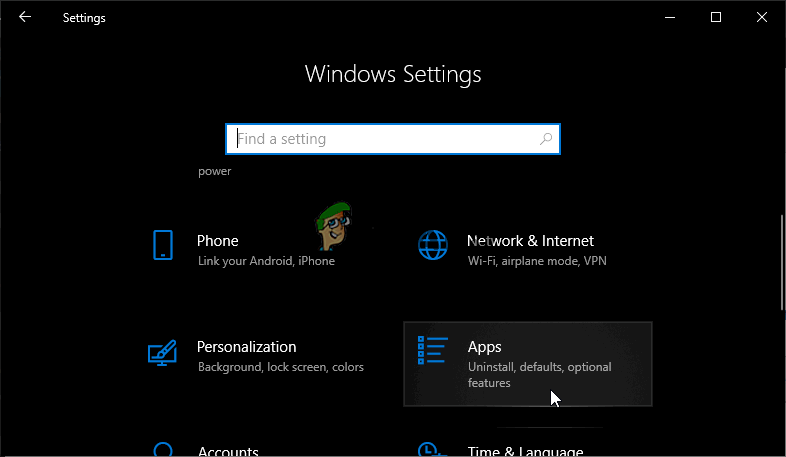
Apps section in Settings - Select “Web Browser” and then click on “Internet Explorer” to set it as default.
- Check to see if the issue persists.